Buying Guide for the Best Ultra Short Throw Projector
Choosing the right ultra-short-throw projector can significantly enhance your viewing experience, whether it's for home entertainment, business presentations, or educational purposes. Ultra-short-throw projectors are designed to project large images from a very short distance, making them ideal for small spaces. To make an informed decision, it's important to understand the key specifications and how they align with your needs.Throw RatioThe throw ratio is the distance between the projector and the screen divided by the width of the image. For ultra-short-throw projectors, this ratio is typically less than 0.4:1, meaning they can project a large image from a very short distance. This spec is crucial if you have limited space and want to avoid shadows or obstructions. If you need to place the projector very close to the screen, look for a lower throw ratio.
ResolutionResolution refers to the number of pixels that make up the image on the screen. Higher resolution means more detail and clarity. Common resolutions include 1080p (Full HD) and 4K (Ultra HD). If you plan to use the projector for high-definition content like movies or gaming, a higher resolution like 4K would be beneficial. For basic presentations or educational purposes, 1080p might suffice.
BrightnessBrightness is measured in lumens and indicates how well the projector can display images in various lighting conditions. Higher lumens mean brighter images. For dark rooms, 1500-2500 lumens may be adequate. For rooms with some ambient light, 2500-3500 lumens are better. For well-lit rooms or outdoor use, look for projectors with 3500 lumens or more. Consider your typical viewing environment to choose the right brightness level.
Contrast RatioThe contrast ratio measures the difference between the darkest and brightest parts of an image. A higher contrast ratio means deeper blacks and more vibrant colors. This is important for image quality, especially in dark scenes. Ratios like 1000:1 are basic, while 3000:1 or higher offer better image depth and color richness. If you prioritize image quality for movies or gaming, aim for a higher contrast ratio.
Connectivity OptionsConnectivity options determine how you can connect your projector to other devices. Common ports include HDMI, USB, and VGA. Some projectors also offer wireless connectivity like Wi-Fi or Bluetooth. If you plan to connect multiple devices like gaming consoles, laptops, or streaming devices, ensure the projector has enough and the right types of ports. Wireless options can add convenience for streaming content directly.
Lamp LifeLamp life indicates how long the projector's lamp will last before it needs replacement, usually measured in hours. Longer lamp life means less frequent replacements and lower maintenance costs. Typical lamp life ranges from 2000 to 5000 hours, with some models offering up to 20,000 hours with LED or laser technology. If you use the projector frequently, look for models with longer lamp life to reduce long-term costs.
Built-in AudioSome projectors come with built-in speakers, which can be convenient if you don't have an external sound system. However, built-in audio quality can vary. If audio quality is important to you, check the wattage and reviews of the built-in speakers. For a more immersive experience, you might still want to connect external speakers or a sound system.
Keystone CorrectionKeystone correction helps to adjust the image if the projector is not perfectly aligned with the screen, preventing distortion. This feature is especially useful for ultra-short-throw projectors, which are often placed at unconventional angles. Look for projectors with both vertical and horizontal keystone correction for maximum flexibility in placement.
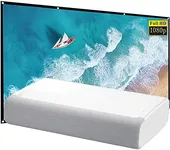
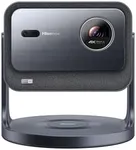
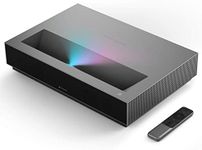
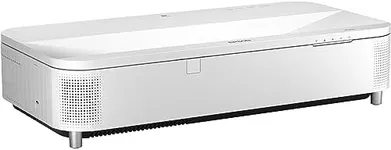


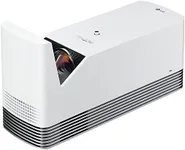




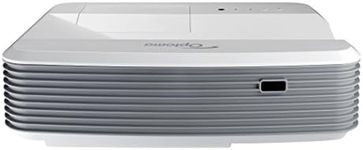
![[AI Auto Focus+Auto Lens Cap]Outdoor-Projector 4K with WiFi 6 and Bluetooth:Upgrade 850 ANSI Native 1080P Jimveo Portable Projector, Auto 6D Keystone&Zoom,Home LED Movie Projector for Outdoor/Home Use](https://images-proxy.bestreviews.guide/N3B-d4ZlYJNJMfomF8c_pLE8pHI=/0x150/https://m.media-amazon.com/images/I/51PuQNz4duL._AC_CX679_.jpg)
![[Netflix-Licensed/Dolby Audio]Outdoor Projector with Wifi 6 and Bluetooth, iSinbox 1080P Native 700ANSI Portable Movie Projector, Built-in Netflix/YouTube/PrimeVideo, Electric Focus Smart Projector](https://images-proxy.bestreviews.guide/Cte3qzCNs45sbxDyB3wFASbH6mI=/0x150/https://m.media-amazon.com/images/I/51b6wI1PMWL._AC_CX679_.jpg)





